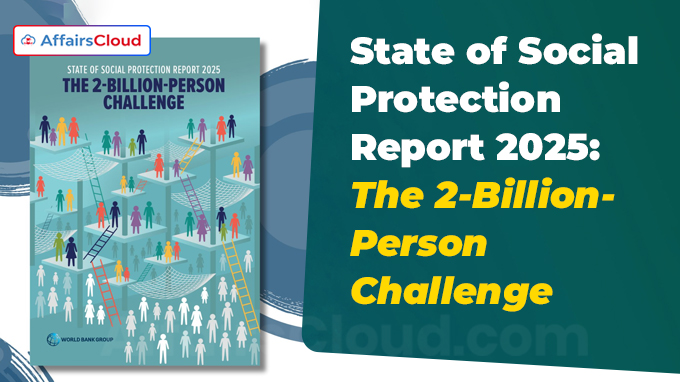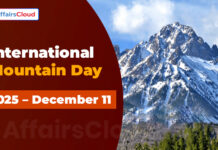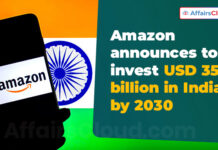 In April 2025, Washington, (United States of America, USA)-based World Bank (WB)released the “State of Social Protection Report 2025: The 2-Billion-Person Challenge”. According to the report, three out of four people in low-income countries (LICs) still have no access to social protection services. The report highlights the progress and challenges in expanding social protection around the world.
In April 2025, Washington, (United States of America, USA)-based World Bank (WB)released the “State of Social Protection Report 2025: The 2-Billion-Person Challenge”. According to the report, three out of four people in low-income countries (LICs) still have no access to social protection services. The report highlights the progress and challenges in expanding social protection around the world.
- Almost, two billion people in LICs and Middle-Income Countries (MICs) lacked access to adequate social protection as of 2022.
- The report finds that social protection benefits are unevenly distributed. Across a sample of 27 countries, women receive, on average, 81 cents for every USD 1 received by men.
Note: Social protection means the set of policies and programs that aim to support people, especially the poor and vulnerable, by providing them with basic needs like healthcare, education, income support, and other welfare services. Three pillars of social protection – social assistance, social insurance, and labor market and employment programs
About the State of Social Protection Report 2025:
i.The report has been developed by the WB’s ASPIRE (Atlas of Social Protection Indicators of Resilience and Equity) team, with support from departments working on social safety nets, labour, skills, and pensions.
ii.It is based on the ASPIRE database, which includes information from 153 countries. These consist of 25 LICs, MICs, and 23 High-Income Countries (HICs).
Key Findings:
i.An analysis of data from 73 countries, including LICs, MICs, HICs, reveals that social protection coverage grew steadily between 2010 and 2022. On average, coverage rose by 10% points, moving from 41% to 51% of the population.
- The increase was even more significant for the poorest sections in low-income countries, where coverage jumped by around 17% points during the same period.
ii.Over the past decade, social protection in LICs and MICs has expanded to cover around 4.7 billion people—three out of every four—yet 1.6 billion still remain without any form of coverage.
iii.At the current rate of progress, it could take 18 years to fully cover people living in extreme poverty and 20 years to include the poorest 20% of households in low- and middle-income countries under social protection systems.
iv.In LICs, over 80% of the population either has no access to or is only partially covered by social protection programs. In lower-middle-income countries (LMICs), like India, more than 30% of the people are affected by this lack of coverage.
- Globally, 88% of those in extreme poverty have no or inadequate protection, with 98% in LICs and 97% in Sub-Saharan Africa.
v.The report shows that, on average, countries spend 5.3% of their Gross Domestic Product (GDP) on social protection.
- HICs spend much more—over five times the GDP share and nearly 86 times more per person than LICs. Low-income nations spend just 0.8% of GDP on social help, while Upper-Middle-Income Countries (UMICs) spend around 2%.
vi.In fragile and conflict-hit countries, about 77% of social aid depends fully on foreign grants. The report says that changing subsidy policies can free up more funds.
- Currently, over USD 7 trillion is spent globally on subsidies, mainly in fuel and farming, but most of this helps richer people more than the poor.
Point to Note:
According to the World Social Protection Report ,WSPR (2024–26) by the International Labour Organization (ILO) based in Geneva, Switzerland, India’s social protection coverage nearly doubled from 24.4% in 2021 to 48.8% in 2024, reaching almost half of the population.
About World Bank (WB):
President– Ajay Banga
Headquarters– Washington, the United States of America, USA
Established– 1944
Member– 189 Countries




